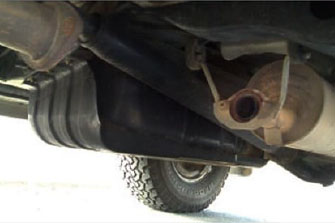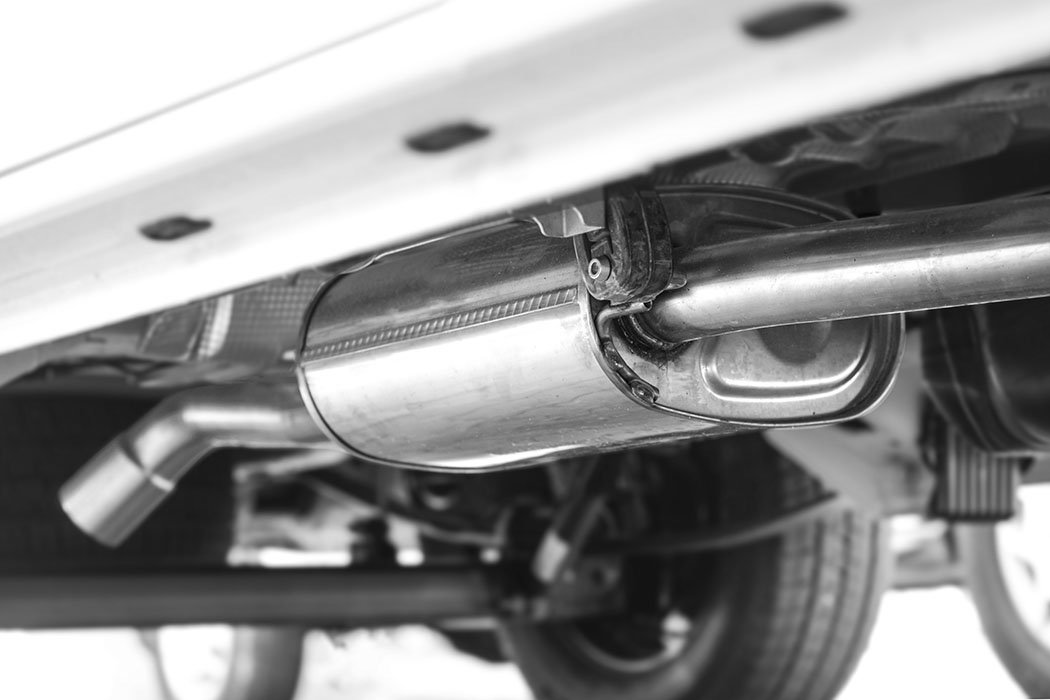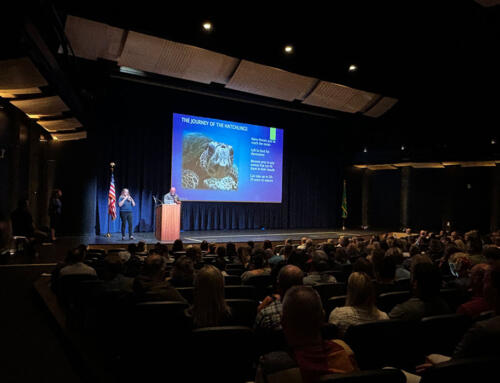In case you haven’t heard, there is another epidemic occurring now- an outbreak in the number of catalytic converter thefts from vehicles nationwide, including several instances of thefts from school district facilities including school parking lots during school hours.
Catalytic converters are designed to act as a line of defense against harmful exhaust system emissions by turning pollutants into harmless gasses. Thieves target catalytic converters because they contain the precious metals platinum, palladium, and rhodium. The metals are expensive, and thieves sell the converters to scrap yards for several hundred dollars per piece, depending on the size of the converter and the current rate on the metals inside it. It can cost you on average up to $2000 to replace a catalytic converter, and it is illegal to drive your car without one. The resulting gap in your exhaust system also makes the car run poorly until it is fixed.
Thieves typically use a saw or wrench to remove it, depending on whether the catalytic converter is bolted or welded in, and removal can take as little as two minutes so theft can occur in broad daylight. Trucks and SUVs are often hit by thieves because it is easy to slide under the vehicle rather than jack it up, but it has been the Toyota Prius that has been frequently targeted.

What’s missing in this picture? Catalytic converters contain precious metals, making them tempting targets for thieves.
So, what can you do to help prevent catalytic converter theft for your personal vehicle and for district vehicles?
- If your vehicle is not able to be parked in a locked garage, try your best to park in a well-lit area or near security cameras. At school, park as close to the building entrance as you can or near areas where pedestrian traffic is high. Park district vehicles in a more secure setting such as behind a locked and fenced lot. Post signs on the fencing warning that the lot is under video surveillance.
- Install surveillance equipment around your property. Sometimes even the presence of security cameras can deter a thief. Consider PTZ (pan, tilt, zoom) cameras that have low-light capability. Many districts are capturing these events on video, but the video quality for these nighttime occurrences is often not clear enough for the police to identify suspects.
- Install motion activated lights near the parking area.
- Consider etching your vehicle’s VIN number into the catalytic converter. Some law enforcement agencies suggest painting your catalytic converter with a high-temperature fluorescent orange paint, such as those sprayed on barbecue grills. This may deter a thief from stealing it, as it makes the part easily identifiable, and many scrap yards and recyclers will not buy them if they have been marked.
- If you can, add additional security on your district’s property, such as a security patrol. Ask your local law enforcement to increase their patrols near your district’s vehicle storage lots.
- Consider investing in a cat-protection device and installing it on your vehicle. Aftermarket devices include:
- Having the converter welded in place also makes it more difficult to remove.
- If you have a security system on your car, calibrate it so vibration sets it off.
- Alert staff to this problem and ask them to be vigilant, especially if they see people “working” on parked vehicles or notice vehicles that seem to be just cruising through the parking lot.
Some of these tips may not apply to your situation, but we hope you are able to take away at least one helpful tip to keep your vehicle(s) safe!
If your district does experience the theft of a catalytic converter from a district-owned vehicle contact your ESD 112 claims department at 360-952-3572.





 ESD 112 equalizes educational opportunities for learning communities through innovative partnerships, responsive leadership, and exceptional programs.
ESD 112 equalizes educational opportunities for learning communities through innovative partnerships, responsive leadership, and exceptional programs.